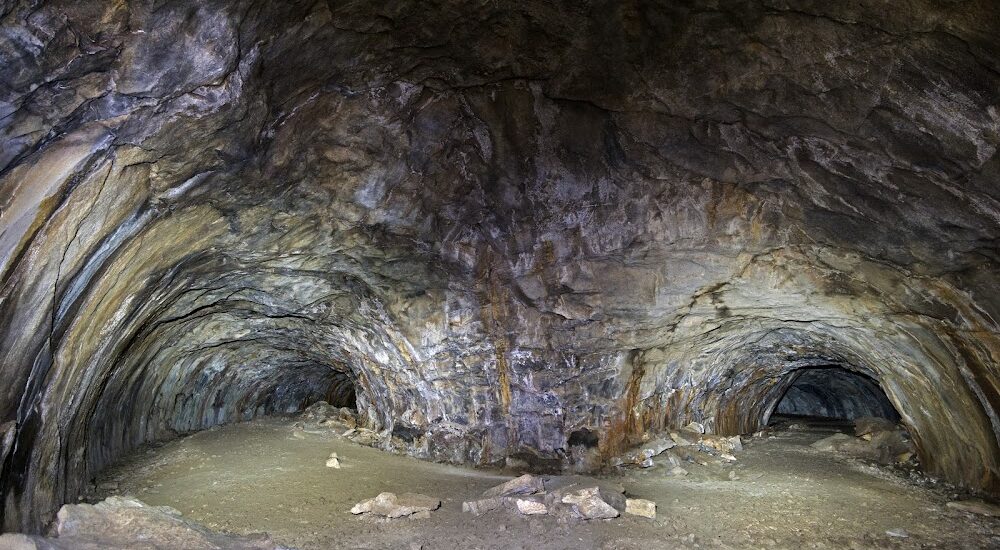Welcome to Lava River Cave, a fascinating underground journey through time and geology. This remarkable lava tube, located in the Coconino National Forest near Flagstaff, Arizona, offers a glimpse into the volcanic past of the region. Discovered in 1915 by lumbermen working in the area, the cave stretches approximately 0.75 miles, making it the longest known cave of its kind in Arizona.
The formation of Lava River Cave dates back between 650,000 and 700,000 years ago, when a volcanic eruption at Hart Prairie released a river of molten lava. As the outer layers of this lava flow cooled and solidified, a tube-like structure was formed. Inside, the lava continued to flow until it eventually drained away, leaving behind the hollow tunnel we explore today. Visitors can see both ʻAʻā and Pāhoehoe basaltic lava formations within the cave, offering a unique opportunity to observe these geological features up close.
Over the years, the cave has served various purposes. Early homesteaders used it as a natural refrigerator, collecting and storing ice throughout the seasons. Today, it attracts adventurers and geology enthusiasts eager to experience its cool, dark depths. Despite its popularity, the cave remains largely unchanged, a testament to the enduring nature of these ancient formations.
Visiting Lava River Cave is an adventure requiring preparation. The cave remains at a chilly 35 to 45 degrees Fahrenheit year-round, so warm clothing is essential, even in summer. The absence of light within the cave makes it necessary for visitors to bring multiple light sources. The slippery and uneven terrain also calls for sturdy hiking boots. Despite these challenges, the cave’s intriguing history and stunning formations make it a worthwhile exploration.
The Forest Service manages the cave and has undertaken efforts to preserve its natural state. In 1991, a major cleanup removed litter and graffiti, restoring the cave’s pristine condition. Visitors are encouraged to respect the cave by adhering to Leave No Trace principles, ensuring that this geological wonder remains unspoiled for future generations.






